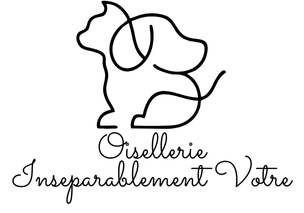Understanding Heat Stroke in French Bulldogs
French Bulldogs, like many brachycephalic breeds, are particularly vulnerable to coup de chaleur or heat stroke. This condition occurs when a dog’s body overheats, leading to distress and potential health risks. Detecting and acting swiftly upon the early signs of coup de chaleur is crucial to maintaining the overall santé des chiens.
Definition and Significance
Heat stroke in French Bulldogs is a state of hyperthermia, where their body temperature rises excessively. Due to their short skull structure, these dogs have difficulty breathing efficiently, impairing their ability to regulate body heat effectively compared to other breeds.
Dans le meme genre : Engaging Activities for Senior Golden Retrievers: Boosting Cognition with Limited Mobility
Contributing Factors
The brachycephalic nature of French Bulldogs means their nasal passages are shorter, limiting airflow. This restriction makes these dogs more susceptible to heat stress, especially in warmer climates, enclosed spaces, or during vigorous activity. Owners must remain vigilant in such conditions to prevent their pets from overheating.
Physiological Response
During exposure to high temperatures, French Bulldogs can struggle to cool down, as they mainly rely on panting. If they cannot release heat quickly, their internal temperature continues to rise, leading to potential damage to vital organs. Detecting and acting by providing water and shade can alleviate stress and protect their fragile health.
A lire également : Introducing a Playful New Kitten to Your Herding Corgi: Tips for a Smooth Transition!
Recognizing Symptoms of Heat Stroke
Identifying the symptoms of heat stroke can be crucial in ensuring the bien-être animal. Immediate attention is necessary if you observe the following signes d’alerte.
Early Signs of Heat Stroke
Heat stroke can start subtly. Panting excessively and drooling are classic telltale indicators. When a pet begins to pant more than usual, it’s often the first sign that they are overheating. Alongside this, lethargy and weakness might also be noticeable. A normally energetic pet appearing sluggish or struggling to move is a concern. Changes in behaviour, such as restlessness, provide additional warnings. They may seem uncomfortable or agitated, signaling the early stages of heat stroke.
Moderate Symptoms to Watch For
As heat stroke worsens, vomiting and diarrhea often surface. The body’s response can be harsh, reflecting the internal stress it’s enduring. Bright red or purple gums and tongue are other significant indicators. These color changes highlight the body’s struggle with oxygenation. Additionally, a rapid heart rate and breathing underscore the urgency of the situation. These symptoms signify that the pet is entering a more critical state.
Severe Symptoms Indicating Emergency
In dire scenarios, a pet may experience collapse or loss of consciousness. Such signs demand immediate emergency care. Similarly, seizures or ongoing disorientation suggest severe neurological involvement. Elevated body temperature beyond 104°F (40°C) is a clear indicator of a life-threatening state, necessitating swift intervention.
Immediate Actions for Heat Stroke
Rapid Réaction d’Urgence is crucial when you detect signs of heat stroke in your French Bulldog. Recognizing symptoms like excessive panting, confusion, and a bright red tongue early can make a substantial difference. Once observed, immediately begin Soins aux Chiens to cool them down.
Firstly, relocate your dog to a shaded or air-conditioned area. This simple step helps to lower their body temperature. Use cool, but not cold, water to gently wet their coat. Cold water might cause their body temperature to drop too quickly, making matters worse. Using a fan to boost evaporation can further aid in cooling.
To check effectiveness, ensure your dog’s breathing begins to normalize. If you notice no improvement or symptoms escalate, such as vomiting or unresponsiveness, it is critical to seek veterinary assistance right away. This avoids potential complications like organ damage, reinforcing the importance of prompt action.
Avoiding heat stroke in the first place is equally vital. Regular hydration, avoiding strenuous activities during hot weather, and being observant of your pup’s behavior can prevent emergencies. Offering frequent water breaks and shaded rest periods during summer walks are effective measures. Always prioritize your pet’s health by preparing for heat-related challenges, solidifying a proactive Prévention des Urgences approach.
Preventive Measures to Avoid Heat Stroke
Keeping your canine companion safe from heat stroke is essential, especially during warm weather. Here’s how to effectively prevent heat stroke through careful planning and strategies.
Safe Outdoor Activities
To ensure your dog remains cool and comfortable, focus on scheduling walks and play sessions during optimal times such as early morning or late evening. These periods tend to be cooler, minimizing the risk of overheating.
Hydration is paramount, so always carry water and encourage frequent water breaks to maintain your dog’s moisture levels. Watch for early warning signs of overheating, such as excessive panting or lethargy, during outdoor activities.
Home Environment Adjustments
Creating a cool indoor environment is achievable with a few simple adjustments. Utilize fans or air conditioning to maintain a comfortable temperature. Shade is a crucial element when your dog spends time outdoors—ensure there’s a shaded area available for resting. These adjustments can significantly impact your dog’s comfort and prevent heat-related issues.
Seasonal Awareness and Care
During the summer months, understanding the seasonal risks is critical. Prepare for heat waves by adjusting your dog’s routine to suit extreme temperatures. Be proactive and tailor outdoor activities in line with seasonal shifts to enhance your pet’s well-being.











